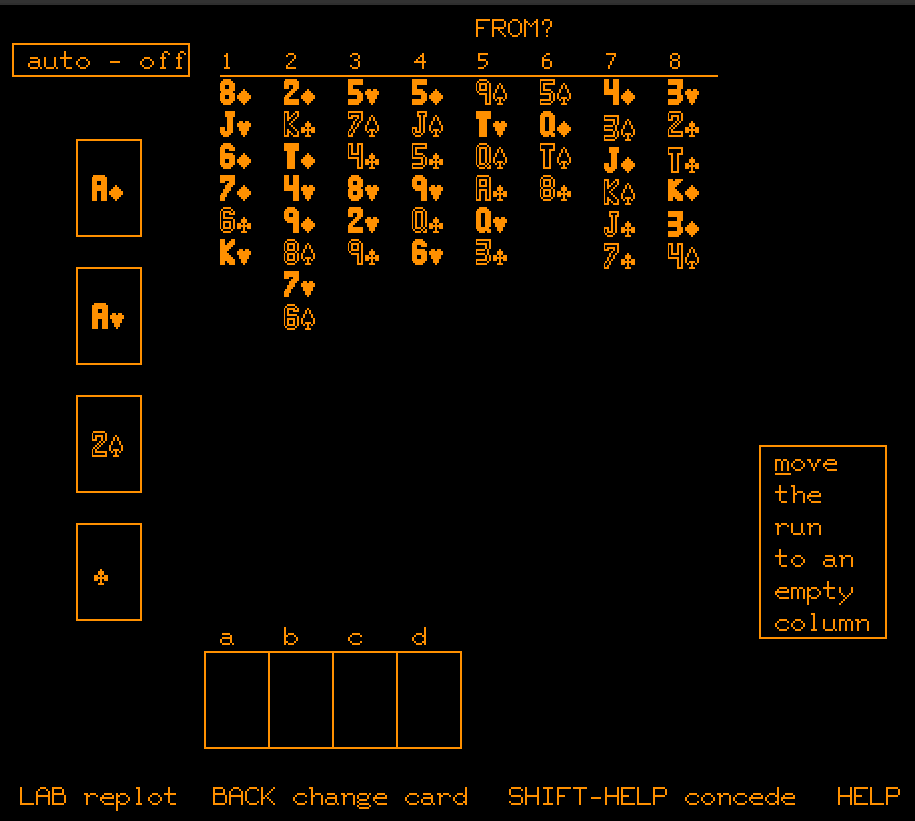PLAY-FREECELL.COM

Who Invented Freecell? The Story of its Creation
Home / Blogs / Who Invented Freecell? The Story of its Creation

Paul Henri Alfille might not be a name you recognize, but if you've ever spent countless hours glued to your computer screen playing Freecell, you owe him a big thank you. (Or maybe not, considering all the time you’ve lost! :)) Alfille, born in the 1950s had a talent for problem-solving and a passion that extended to both medicine and programming. While pursuing his studies at the University of Illinois in the 1970s he stumbled upon something that would make him somewhat of a legend in the world of card games; Freecell.
Early Life and Career
Alfille's journey into the world of programming began out of necessity. Medical school is expensive, and programming turned out to be a pretty good way to pay the bills. He picked up coding on the PLATO system, a revolutionary computer-based education system at the University of Illinois. This system was a playground for budding programmers and game enthusiasts, offering shared resources and a platform for creating new software.
The Precursors to Freecell
Before Freecell became the iconic game we know today, it had some pretty interesting ancestors. One of them is Napoleon in St. Helena, documented by Swedish European bridge champion Einar Werner in his 1945 book 'The Best Patience Games in the World.' This game had minor differences from today's version, such as placing the last four dealt cards in the free cells and only allowing kings in empty columns.
Then there’s Eight Off, which is kind of like Freecell’s older sibling. This game uses eight empty cells—double what Freecell has. The main twist? Cards on the tableau have to be sorted by color, not by alternating colors. And only kings can sit in empty columns. This game first showed up in Albert H. Morehead’s 1949 book "Complete Book of Solitaire and Patience Games."
But the real game-changer was Baker’s Game, detailed by Martin Gardner in his 1968 "Mathematical Games" column in "Scientific American." Gardner’s version had four cells and allowed any card in empty columns, making it much more accessible.
Creating Freecell

Inspired by Martin Gardner’s column, Paul Alfille began experimenting with Baker’s Game in 1978, coding it in TUTOR, the language of the PLATO system. Unlike earlier versions that used physical cards, Alfille's innovation was the first computerized version, eliminating the need for manual tasks like shuffling and dealing cards. This not only streamlined gameplay but also enhanced its strategic depth, making Freecell a unique and engaging experience.
His creation was designed to be purely strategic, with all cards visible from the start. This transparency was literally a game-changer because it removed the element of chance found in many other solitaire games. Players could see all the cards from the beginning, allowing them to plan their moves strategically rather than relying on luck.
Alfille soon realized that sorting the cards in descending order while alternating colors made almost all deals winnable. This revelation significantly improved the game. He also introduced the concept of "streaks," tracking consecutive wins and encouraging a competitive spirit among players. The game quickly gained popularity among PLATO users who loved its mix of simplicity and strategic depth.
Impact and Legacy
Despite its early popularity, Freecell remained relatively obscure until the mid-90s. That all changed when Jim Horne, a Microsoft programmer, discovered the game on the PLATO system and created a text-based version for DOS in 1989. He later developed a graphical version that was included in the Microsoft Entertainment Pack 2 for Windows 3.0 in 1991. This version introduced the first standard 32,000 game numbers.
Freecell's popularity soared with Windows 95 in 1995 when Microsoft included it in the operating system. With the release of Windows 95, millions of new users were introduced to Alfille's creation. Windows 95 sold over 40 million copies within its first year, bringing Freecell into countless homes and offices worldwide. Although Alfille didn’t receive any royalties or formal recognition at the time, his contribution to digital entertainment was monumental. The game became a staple for procrastinators and a beloved pastime for many.
The Dual Impact of Freecell’s Creator
Today, Freecell is more than just a game; it’s a testament to the ingenuity of a medical student who loved to code. Alfille went on to have a successful career in medicine, becoming an anesthesiologist at Massachusetts General Hospital. But he never left programming behind, continuing to explore new technologies and create software for personal and professional use.
Paul Alfille’s Freecell continues to captivate players with its unique blend of simplicity and strategic depth. So, next time you play a round, remember the medical student who turned a simple card game into a worldwide sensation.